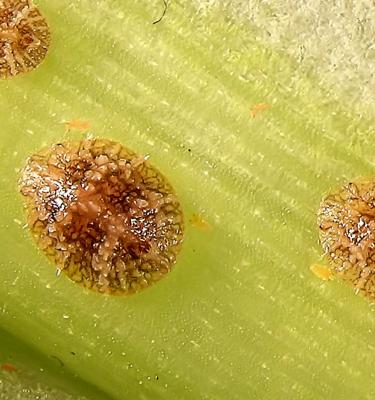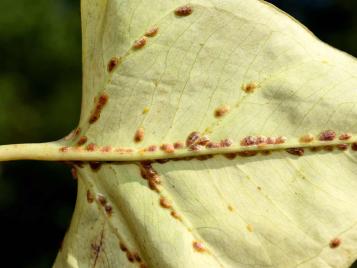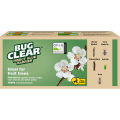

Scale insects
Scale insects are sap-sucking insects that gradually weaken plants. They are so called because the actual insect is covered by a hard, protective shell or scale.
They don’t lead the most exciting of lives, but therein lies their strength. A newly born scale will make a small effort to crawl a few millimetres to find somewhere to feed and will then stay put for the rest of its life laying the eggs for the next generation under its scale. But this immobility and the thickness of their scales makes them difficult to control and resistant to contact insecticides.
How to identify scale insects?
Scale bugs on plants are like little flat or domed shells attached to plant stems or the underside of leaves, usually around the main veins of the leaf. Scale bugs come in different colours, usually brown but some are greyish-white. They vary in size, anything from 1mm to 6mm, depending on the species. Scale insect identification can be tricky because some plants attract their own species of scale insect.

Scale Insect symptoms and damage
Scale insects on plants are easy to see as the colonies cluster openly on stems, but a little less so if they are feeding on the underside of leaves. Infected leaves may turn yellow or become otherwise discoloured. Heavily infected plants will gradually lose their vigour.
Scale insects, like most other sap feeders, excrete a sugary honeydew that drops onto the leaves below the scale infestation. Such foliage develops a sticky sheen which can rapidly become home to black Sooty mould.
Scale Insect control and treatment
Not all scale insects affect the growth of plants and so you might prefer to put up with them. But if you do decide to treat them, here are some suggestions.
How to get rid of scale insects outside
- Small colonies and individual scale insects can be controlled by simply wiping them off the plant with a damp cloth or sponge.
- Where this isn’t feasible, or practical, you can control them by spraying affected plants with an insecticide. Contact insecticides tend to bounce off the hard shell, so the best one to use is a systemic insecticide. These are absorbed inside the plant, and move all around the plant, killing the scale insects as they suck the sap and providing protection against further attacks for up to three or more weeks. Spraying is often more effective against the newly hatched nymphs in summer, rather than the shell-covered adults.
- Evergreen plants such as hollies, camellias, rhododendrons, star jasmine, evergreen azaleas and euonymus can be affected by cushion scale insects. In early summer females lay eggs under white, waxy bands. In mid-summer spray the newly-hatched scale nymphs with a systemic insecticide.
How to get rid of scale insects in the greenhouse or conservatory
In a controlled environment like the greenhouse or conservatory, or on indoor plants, scale insects can breed all year round and so you can treat scale insects at any time of year.
- Remove adult scales and egg masses when you see them with your fingers or a damp cloth.
- Lemon and other citrus trees sometimes develop populations of soft scale bugs. Apply a biological control with the nematode Steinernema feltiae which you water onto affected plants and soil.
- Orchids can be affected by a scale insect for which the biological control treatment is a 2mm long black ladybird, Chilocorus nigritus.
- Spray the affected parts of the plant with a systemic insecticide.
Before you use a systemic insecticide for scale insects on fruit and vegetables, always check that the insecticide is approved for use on edible crops. To protect bees and pollinating insects do not apply to plants when in flower. Do not use where bees are actively foraging. Do not apply when flowering weeds are present.
How to prevent scale insects?
Encourage the creatures that prey on scale insects:
- Blue tits: you often see blue tits flitting through shrubs feeding on scale insects. You can attract blue tits into your garden by installing a nestbox and putting sunflower seeds and chopped peanuts in your bird feeder.
- Ladybirds: both adult ladybirds and their larvae feed on scale insects. You can build a simple ladybird lodge using pinecones fastened together in a pyramid and protect it from the rain with a couple of tiles.












